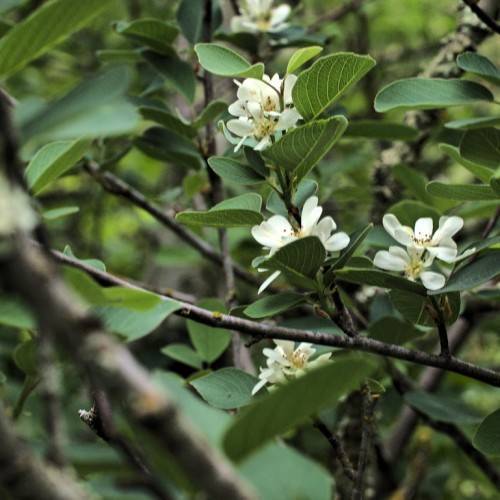
Pacific Serviceberry
Amelanchier alnifolia var. semiintegrifolia
Also Known As - Saskatoon ServiceberryWatering:
Average
Hardiness Zone:
Flowers:
Flowers
Sun:
Sun, Partial Shade
Soil:
Clay, Sand, Loam
Fruits:
Fruits Ready In
Leaf:
Yes
Growth Rate:
High
Drought Tolerant:
Yes
Salt Tolerant:
Yes
Thorny:
Yes
Invasive:
Yes
Care Level:
Medium
watering
Great Ragweed should be watered on a regular basis to keep the soil moist. This species prefers moist soil but will not tolerate waterlogging, so be careful not to overwater. It is best to water deeply 1-2 times per week depending on the soil, weather, and light conditions. Let the soil dry out slightly between waterings. During hot and dry periods, Great Ragweed may need to be watered up to 3 times a week. In the winter months, it is not necessary to water as often since this species goes dormant.
sunlight
Great Ragweed does best in full sunlight, which means it should receive 8 to 12 hours of direct sunshine a day. If possible, it is best to provide as much sun as possible, as this will help it reach its full potential. It is not an picky plant however, and can tolerate partial shade as well. It is also not bothered much by excessive heat and can tolerate considerable periods of direct sun. Great Ragweed is a warm season annual, which means it grows best in the spring and summer months when temperatures are between 60 and 85 degrees Fahrenheit during the day.
pruning
Great Ragweed should be pruned during the late summer or fall, after flowering is done. Pruning involves cutting off dead flowering stems and seed head to promote new growth. Depending on how large the plant is, you may need to prune up to 1/3 of the stems. This will also help curb the plants spread and keep it looking neat. In addition, any thin, weak or dead stems should be removed, which can help make the plant appear less weedy.
